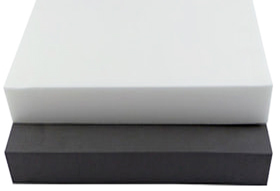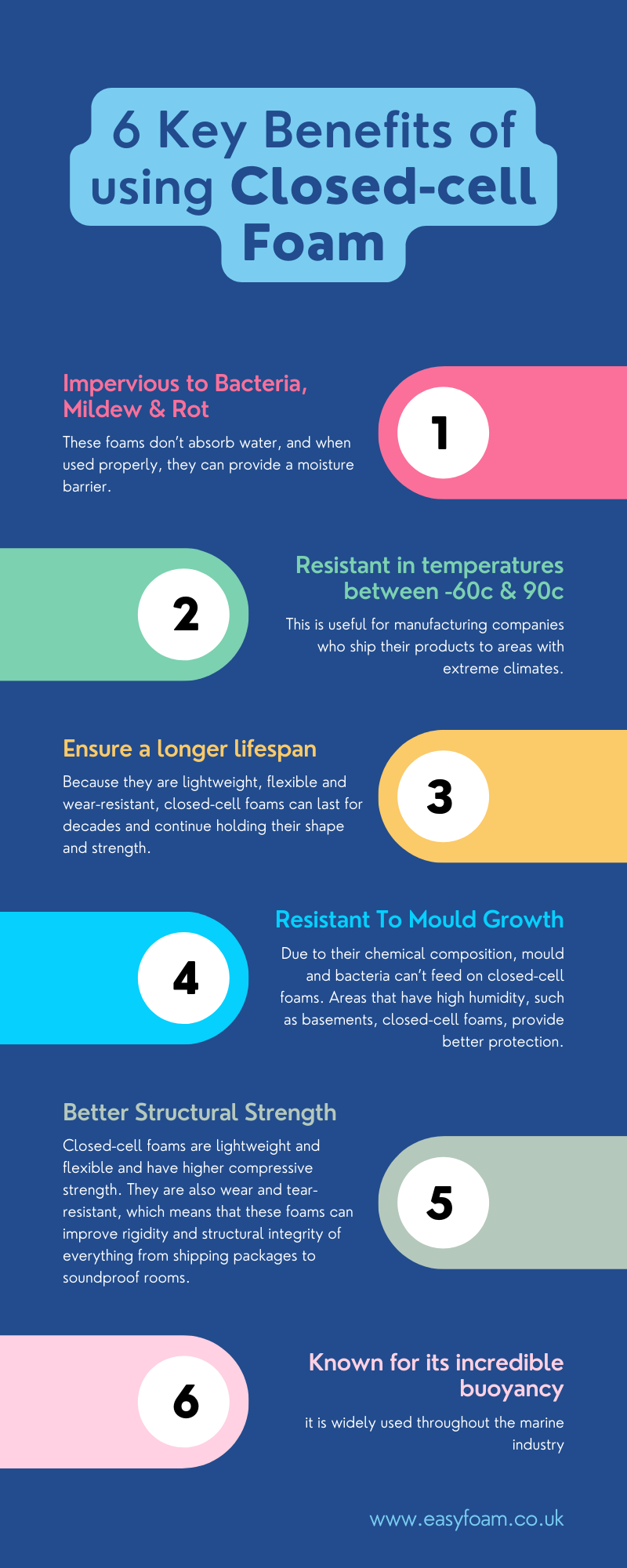Closed Cell Foam Benefits

Closed-cell foam is a flexible and strong sealing material with cells that sit together closely. Polyethylene foam, EVA foal, nitrile foam, SBR foam rubber, and neoprene foam are all examples of closed-cell foams. As a comparison, cells in open-cell foams are broken, and the air is diffused into the substance. Usually, closed-cell foams are denser and heavier than open-cell foams.
Keeping that in mind, let’s take a look at the 6 key benefits of using closed-cell foam:
Impervious To Bacteria, Mildew And Rot - other than for insulation, closed-cell foams provide excellent resistance to bacteria, mildew, and rot. These foams don’t absorb water, and when used properly, they can provide a moisture barrier.
Resistant in Temperatures Between -60c And 90c - closed-cell foams are resistant in temperatures between -60c and 90c. This is useful for manufacturing companies who ship their products to areas with extreme climates.
Longer lifespan - closed-cell foams ensure a longer lifespan. Because they are lightweight, flexible and wear-resistant, closed-cell foams can last for decades and continue holding their shape and strength. Some open-cell foams may gradually lose their effectiveness, which may require re-insulation. This can cost more money and time.
Resistant To Mould Growth - due to their chemical composition, mould and bacteria can’t feed on closed-cell foams. Areas that have high humidity, such as basements, closed-cell foams, provide better protection. Foams with digestible, organic compositions will degrade over time and lose their ability to protect the home.
Better Structural Strength - closed-cell foams are lightweight and flexible and have higher compressive strength. They are also wear and tear-resistant, which means that these foams can improve rigidity and structural integrity of everything from shipping packages to soundproof rooms.
Buoyancy - closed-cell foam is known for its incredible buoyancy, and it is widely used throughout the marine industry.
Closed-Cell Foam Applications Include: • Shock Absorption • Packaging • Buoyancy Aids • Thermal Insulation • Kneeling Pads • Acoustic Sound Proofing
For waterproof insulation with excellent durability and thermal properties, closed-cell foams are a better choice. But for better soundproofing performance, open-cell foams are more preferable.
To learn more benefits of closed-cell foam and how it is used in a wide range of industries, contact EasyFoam today and speak with our foam experts who can answer any questions you might have.
If you enjoyed our blog, please feel free to share it on your favourite social media sites.

